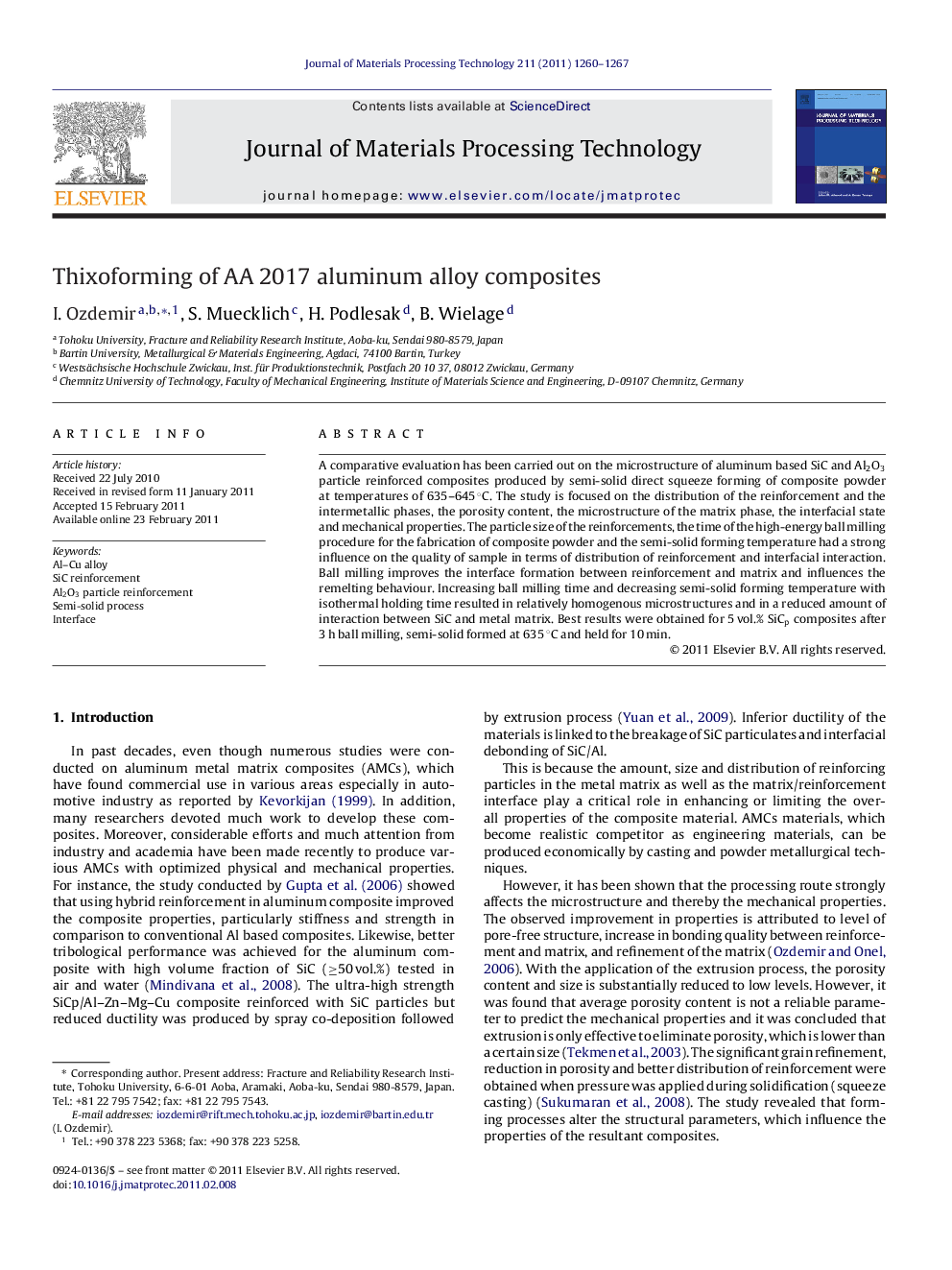| Article ID | Journal | Published Year | Pages | File Type |
|---|---|---|---|---|
| 794796 | Journal of Materials Processing Technology | 2011 | 8 Pages |
A comparative evaluation has been carried out on the microstructure of aluminum based SiC and Al2O3 particle reinforced composites produced by semi-solid direct squeeze forming of composite powder at temperatures of 635–645 °C. The study is focused on the distribution of the reinforcement and the intermetallic phases, the porosity content, the microstructure of the matrix phase, the interfacial state and mechanical properties. The particle size of the reinforcements, the time of the high-energy ball milling procedure for the fabrication of composite powder and the semi-solid forming temperature had a strong influence on the quality of sample in terms of distribution of reinforcement and interfacial interaction. Ball milling improves the interface formation between reinforcement and matrix and influences the remelting behaviour. Increasing ball milling time and decreasing semi-solid forming temperature with isothermal holding time resulted in relatively homogenous microstructures and in a reduced amount of interaction between SiC and metal matrix. Best results were obtained for 5 vol.% SiCp composites after 3 h ball milling, semi-solid formed at 635 °C and held for 10 min.
Research highlights► The originality of this work is combining of high energy ball milling (HEM) and semi-solid forming processes for producing AA2017 (Al–Cu) alloy matrix composite with improved properties and performance. ► Feasible method applied in this work demonstrated that HEM-pretreatment of the composite powder prior to thixoforming improves the microstructure due to better interfacial bonding and relatively homogeneous distribution of fine reinforcements.
